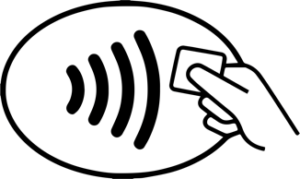ROUTING NUMBER: 307070050
Rest Confident, Your Money is Safe and Secure at Kirtland Credit Union, a message from our President & CEO. Learn More
All Kirtland CU branches and locations will be closed on Friday, July 4 in observance of Independence Day.
Fraud Alert: If you receive a call or text asking to verify a fraudulent transaction, do not respond, call unfamiliar numbers, or click suspicious links. Contact us directly using trusted methods.
Use caution if you receive a call, email, or text message that appears to be from Kirtland Credit Union. Don’t click on links or call phone numbers in unsolicited messages. Remember: We will NEVER ask for your online banking access codes, credentials or for you to transfer money.
If you may experience financial hardship related to the government shutdown, we’re here to help. Call 1.800.880.5328 or visit one of our branch locations for more information.
ROUTING NUMBER: 307070050


Grabbing your weekly groceries, filling up with gas, and weekend shopping—with increasing numbers of retailers accepting digital wallet payments, pulling out a physical card may quickly become a thing of the past.
Digital payments are convenient, valuable, and, best of all, very safe! With some simple setup, you may never want to carry your wallet into a store again.
A digital wallet is simply a payment service, sometimes located on a smart device, in which you can link your accounts, debit cards, credit cards, gift cards, and membership cards. Use these services for online and in-app transactions and to send money to others (Person-To-Person services). Digital wallets also allow you to pay at a retailer by placing the device next to the reader to complete the transaction instead of physically swiping or inserting the card to pay.
There are many digital wallet services that you likely have access to via your smart devices. Some of the biggest include Apple Pay, Google Pay, and Samsung Pay. These three options are similar but do have a few differences in how they work and what you can do with them.
First, there are a couple of buzz terms you’ll need to know to fully understand how the technology works.
To get started with any of the digital wallets, you’ll need to add your cards to your device. The method varies, but you can select your wallet below for detailed instructions on setup.
Once you’ve added a card to your wallet, you can use the wallet to make online payments, send money to a friend, or pay at a retailer that accepts digital transactions.
You’ll know a retailer takes digital payments when you see the NFC symbol. Also, if you see the logo for your wallet—Apple Pay, Google Pay, etc.—the payment system is also set up to work with that wallet.

Yes! If you’ve ever checked out of an online retailer with your PayPal account, sent money to a friend with Zelle or CashApp, congratulations – you’ve used a digital wallet! These online options are becoming more and more ingrained in the online shopping experience. Just add your cards, and you’re ready to roll!
Digital wallets offer unparalleled levels of convenience, in both your online and in-person shopping experiences. But using digital wallet options to pay is also incredibly safe—in fact, it’s safer to pay with a digital wallet than swiping a traditional card.
When we think of card safety, there are three levels of a sort in terms of security.
Digital payments are not only convenient; they’re incredibly safe. Many apps connect with your digital wallet. Grubhub, for instance, allows Apple Pay as a payment option. Simply select Apple Pay during checkout, follow the directions to confirm your choice, and you’re done! More and more retailers, online and physical, are accepting digital payments. Look for the NFC symbol, and start paying without ever pulling out your card.
Need help loading your Kirtland FCU Independence VISA debit or credit card to your digital wallet? Give us a call at 1-800-880-5328.
Routing Number: 307070050
6440 Gibson Blvd. SE, Albuquerque, NM 87108
Federally insured by NCUA Equal Opportunity Lender
Improving your online banking and mobile experience.